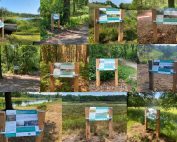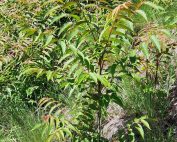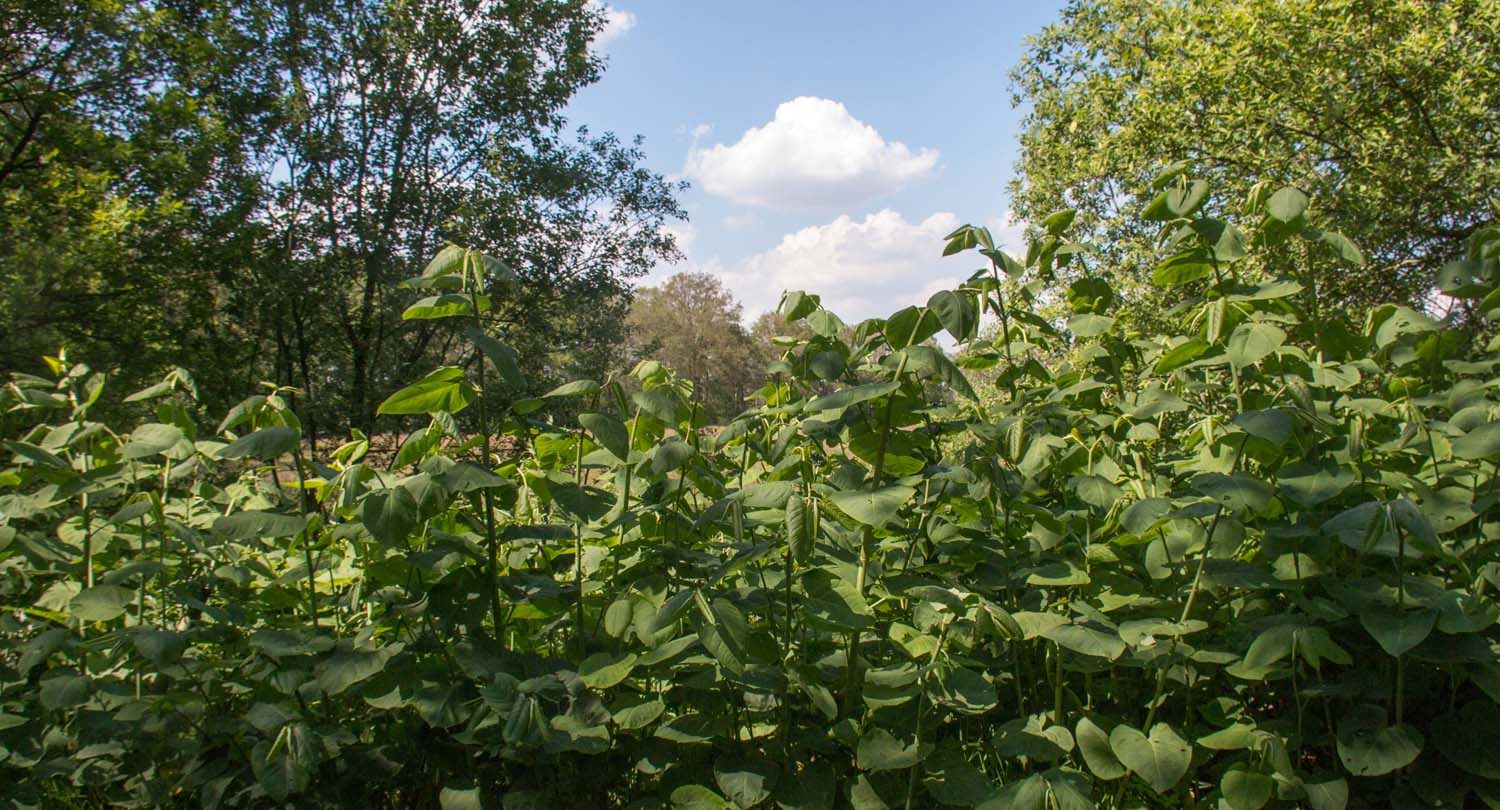
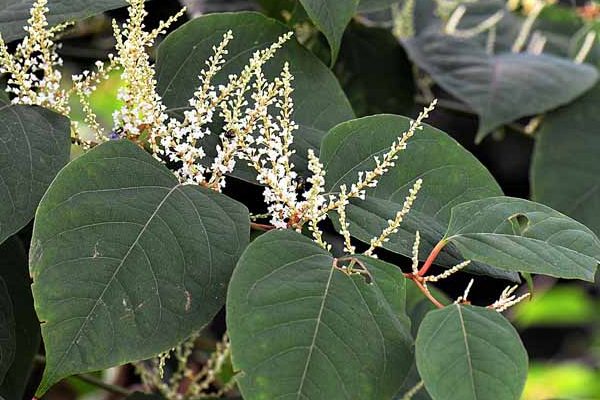
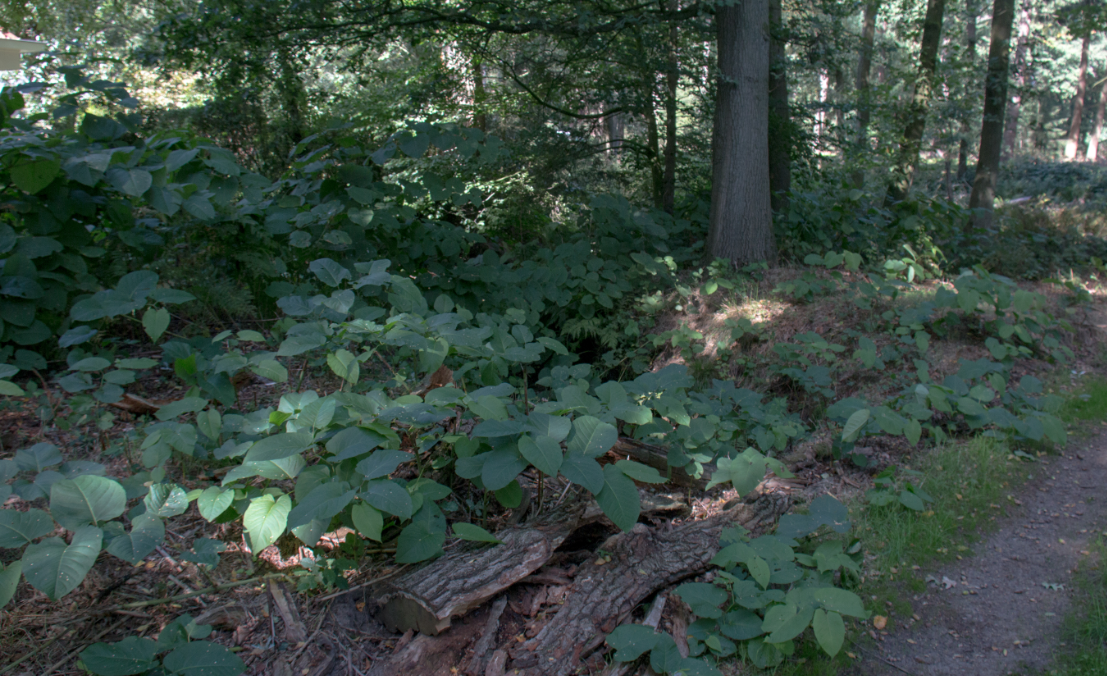
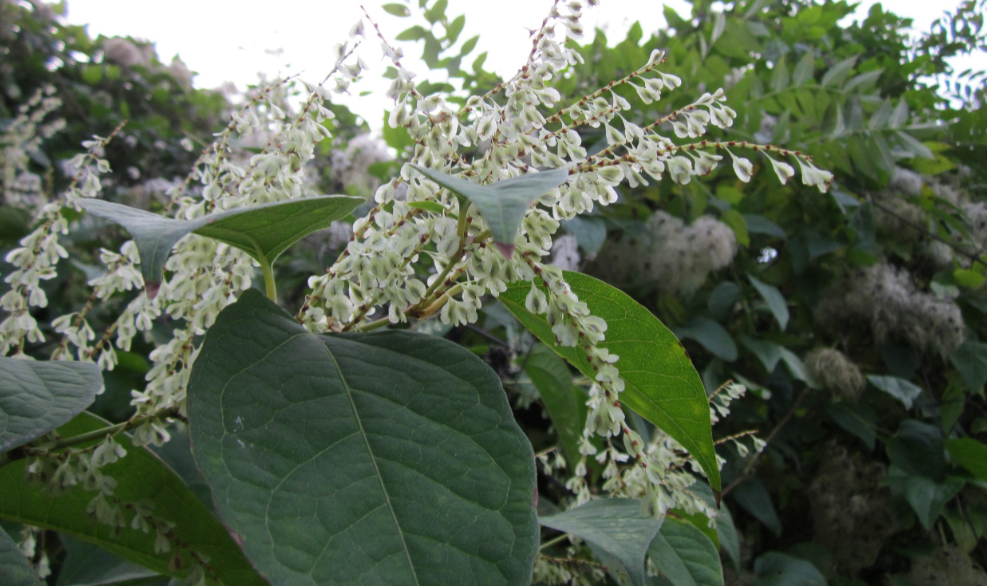
The ecosystem resilience approach in brook valleys
Brook valleys are areas that are situated relatively low along a stream, surrounded by higher sandy soils. They are pre-eminently landscapes that are rich in gradients, with large amount of variation and are therefore particularly valuable for nature. The surrounding landscape, the relief and the groundwater feed determine the character of the brook valley, which can vary greatly.
In LIFE Resilias we will work in the brook valleys to increase the resilience to of the system against dominance of Japanese knotweed. The focus is on the streamside forests in brook valleys. These are very species-rich forests with abundant spring blooms of wood anemones and marsh marigolds. However, this species diversity is threatened by desiccation and displacement by Japanese knotweed and other alien species such as giant balsam. These species can easily spread along streams and find good breeding grounds in the rich moist soil to spread invasively.
The ecosystem resilience approach in brook valleys
In streamside forests, invasive knotweeds and giant balsam can form dense vegetation because the forests are relatively open. Often these are planted forests of the same age and consist of tree species with high light transmission, such as pedunculate oak and poplar. The dense man-high vegetation of Japanese knotweed then prevents the establishment of young trees and shrubs that can compete with the invasive species and regenerate the forest
Well developed streamside forests, on the other hand, consist of several tree layers of different tree and shrub species. Real forest plants can survive well in these shady conditions, but it is too dark for fast-growing invasive alien species. For example; the annual giant balsam can no longer regenerate because of this. Japanese knotweed, however, often has a lot of reserves. It can therefore survive for a long time in the shade, but its biomass becomes less vital and dense over time.
Increasing shade pressure by introducing native species
The ecosystem resilience approach that we are applying in these forests during LIFE Resilias is to increase the shade pressure by introducing tree and shrub species that naturally occur in streamside forests. The species that we reintroduce are shade-tolerant trees – for example, winter and summer lime, hornbeam, fladder elm, maple, hazel and, in more open lighter areas, sweet cherry, blue willow and poplar. This reinforces the stratification of the forest and prevents the establishment and spread of invasive alien species. Reintroduction takes place in two different ways:
- intensively, where the invasive alien species are present in high coverages
- extensively, gradually, where we want to prevent invasive alien species from establishing.
The intensive approach is done in open areas where the Japanese knotweed is dominant. Here we plant native trees and shrubs in high densities or – if they are already present – we deliberately choose to favour (stimulate their growth) them. For a few years, we make sure that the young native trees have space to grow by clearing the direct surroundings. This is to prevent Japanese knotweed to overgrow the young plants before they are big enough to overgrown the Japanese knotweed. After a few years, the shadow pressure should ensure that Japanese knotweed is no longer dominant and even gradually disappears.
In the rest of the brook forest, we are taking measures that will initiate a gradual transformation of the forest. Through small-scale thinning in invasive monocultures combined with planting of missing tree and shrub species, we are making a start towards a varied structure-rich forest, where Japanese knotweed cannot behave as invasive.
The ecosystem resilience approach in brook valleys
Brook valleys are areas that are situated relatively low along a stream, surrounded by higher sandy soils. They are pre-eminently landscapes that are rich in gradients, with large amount of variation and are therefore particularly valuable for nature. The surrounding landscape, the relief and the groundwater feed determine the character of the brook valley, which can vary greatly.
In LIFE Resilias we will work in the brook valleys to increase the resilience to of the system against dominance of Japanese knotweed. The focus is on the streamside forests in brook valleys. These are very species-rich forests with abundant spring blooms of wood anemones and marsh marigolds. However, this species diversity is threatened by desiccation and displacement by Japanese knotweed and other alien species such as giant balsam. These species can easily spread along streams and find good breeding grounds in the rich moist soil to spread invasively.
The ecosystem resilience approach in brook valleys
In streamside forests, invasive knotweeds and giant balsam can form dense vegetation because the forests are relatively open. Often these are planted forests of the same age and consist of tree species with high light transmission, such as pedunculate oak and poplar. The dense man-high vegetation of Japanese knotweed then prevents the establishment of young trees and shrubs that can compete with the invasive species and regenerate the forest
Well developed streamside forests, on the other hand, consist of several tree layers of different tree and shrub species. Real forest plants can survive well in these shady conditions, but it is too dark for fast-growing invasive alien species. For example; the annual giant balsam can no longer regenerate because of this. Japanese knotweed, however, often has a lot of reserves. It can therefore survive for a long time in the shade, but its biomass becomes less vital and dense over time.
Increasing shade pressure by introducing native species
The ecosystem resilience approach that we are applying in these forests during LIFE Resilias is to increase the shade pressure by introducing tree and shrub species that naturally occur in streamside forests. The species that we reintroduce are shade-tolerant trees – for example, winter and summer lime, hornbeam, fladder elm, maple, hazel and, in more open lighter areas, sweet cherry, blue willow and poplar. This reinforces the stratification of the forest and prevents the establishment and spread of invasive alien species. Reintroduction takes place in two different ways:
- intensively, where the invasive alien species are present in high coverages
- extensively, gradually, where we want to prevent invasive alien species from establishing.
The intensive approach is done in open areas where the Japanese knotweed is dominant. Here we plant native trees and shrubs in high densities or – if they are already present – we deliberately choose to favour (stimulate their growth) them. For a few years, we make sure that the young native trees have space to grow by clearing the direct surroundings. This is to prevent Japanese knotweed to overgrow the young plants before they are big enough to overgrown the Japanese knotweed. After a few years, the shadow pressure should ensure that Japanese knotweed is no longer dominant and even gradually disappears.
In the rest of the brook forest, we are taking measures that will initiate a gradual transformation of the forest. Through small-scale thinning in invasive monocultures combined with planting of missing tree and shrub species, we are making a start towards a varied structure-rich forest, where Japanese knotweed cannot behave as invasive.




Latest news
Movie on invasive alien species
In the short movie below, made by KU Leuven, Bart Nyssen explains the history and properties of Prunus serotina. He also explains the [...]
Information panels have been placed
At the LIFE Resilias demonstration sites, information panels have been placed. Curious? Come take a look! Demonstration sites
Tree of heaven, a pioneer tree species in Italian coppice forest
Fighting tree of heaven in the northern Italian coppice forest shows that repeatedly cutting down the tree of heaven reduces its share in [...]



